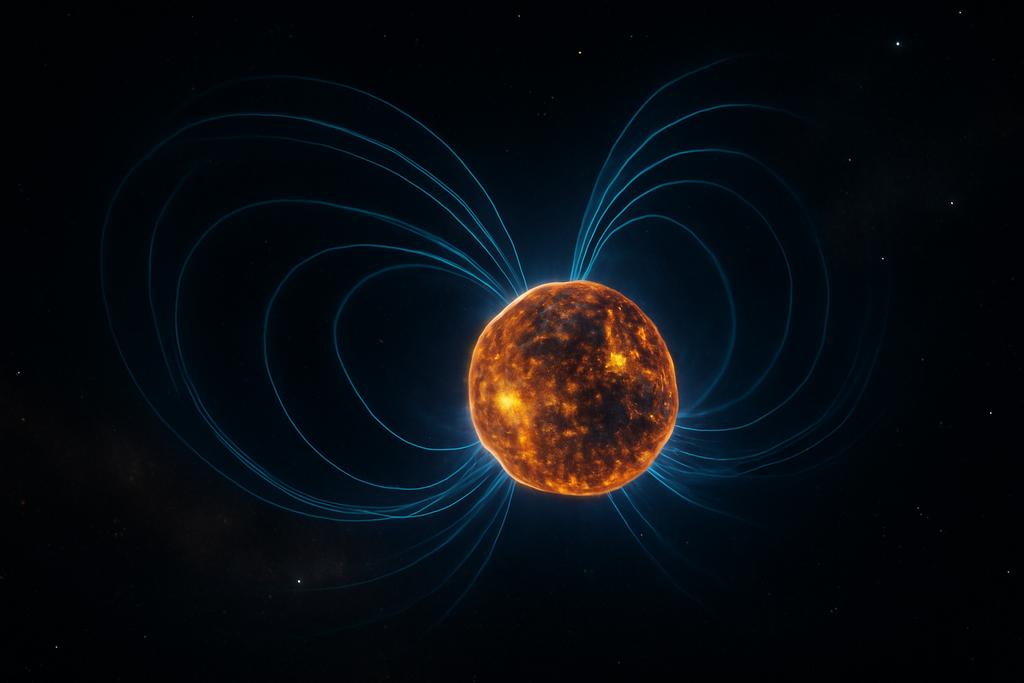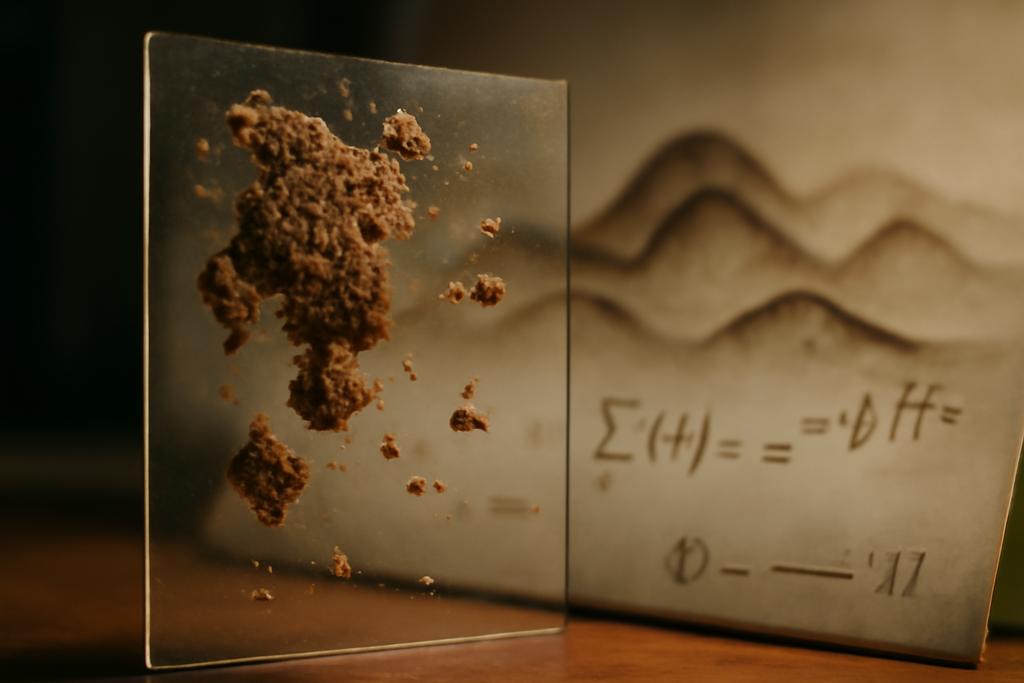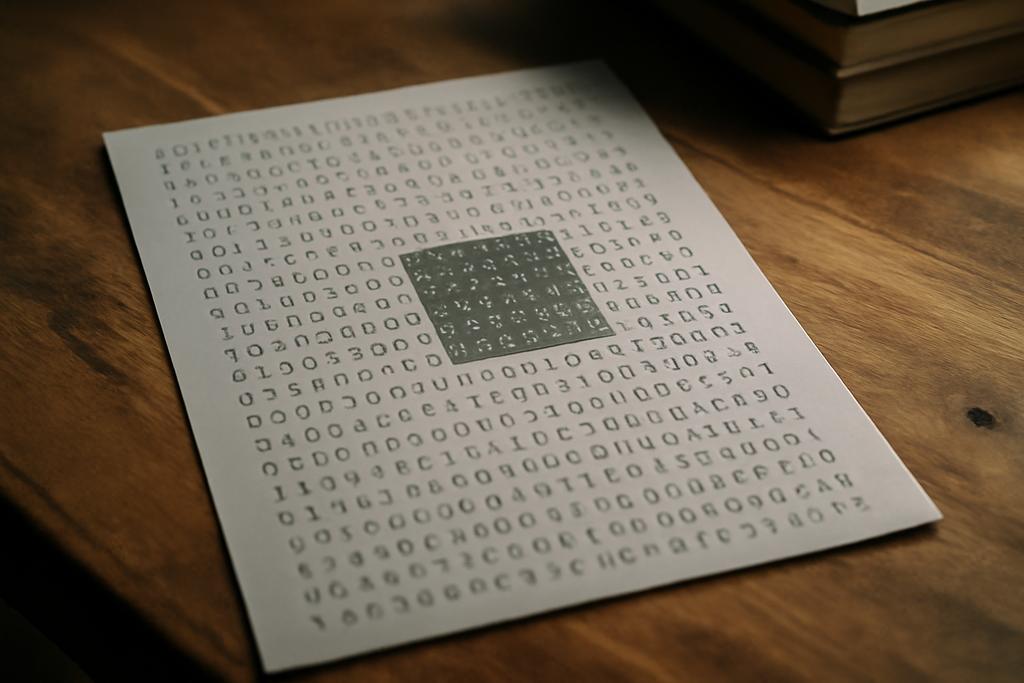The interiors of the universe’s most extreme objects are like laboratories carved out of the imagination. In magnetars—compact stars with magnetic fields so intense they bend the rules of everyday physics—the matter inside can reach densities and field strengths that push our theories to the limit. A new study from Arizona State University asks a very specific question about these cosmic ovens: when quark matter in such a magnetized environment emits neutrinos and antineutrinos in a synchrotron-like process, does that channel cool the star significantly, or is it a whisper lost in the noise of more dominant cooling paths? The answer, it turns out, is the latter. The work, led by Ritesh Ghosh and Igor A. Shovkovy, uses a field-theoretic lens to map out how magnetic fields sculpt the tiny, quantum steps quarks take as they exchange energy with the rest of the universe via neutrinos. In other words, even under the strongest magnetic fields we could imagine in compact stars, this particular neutrino-emission channel is a minor player in the cooling story of unpaired quark matter. The study is anchored at Arizona State University, spanning the College of Integrative Sciences and Arts and the Department of Physics, and it shines a light on how nature keeps the hottest interiors from staying hot for long.
To appreciate what they did, it helps to picture quark matter inside a magnetar as a swarm of charged particles moving in a mushrooming orchestra of magnetic field lines. In this setting, neutrino-antineutrino pairs can be produced not only by the familiar direct weak-decay channels but also by a process that feels almost electromagnetic: a quark transitions between Landau levels—the quantum states particles occupy in a magnetic field—while emitting a neutrino pair. It’s a subtle cross-talk between quantum motion, weak interactions, and strong fields. The researchers approached the problem with the Kadanoff–Baym formalism, a powerful toolkit that lets them track how the neutrino distribution changes under weak interactions by using Green functions rather than wrestling with wavefunctions of individual particles. This method is particularly well-suited to the dense, magnetized, many-body environment inside a neutron star, where the usual perturbative tricks start to fray.
What neutrino–antineutrino synchrotron emission actually is
At its heart, the paper asks whether a quark’s zigzag through magnetic Landau levels could act as a significant source of neutrino-pair radiation. In a dense, magnetized quark liquid, quarks traverse discrete energy ladders defined by the magnetic field. When a quark flips from one ladder rung to another, energy can be carried away by a neutrino and its antiparticle. It’s a process that shares a family resemblance with the classic synchrotron radiation known from electrons spiraling in magnetic fields, but here the carriers are ultradense quark matter and the energy carriers are neutrinos instead of photons. What makes this calculation genuinely challenging is that one must account for how many Landau levels are populated (which depends on the magnetic field strength and the quark chemical potential), how the energy is partitioned among the emitted neutrinos, and how temperature sets the stage for which transitions are most likely.
The authors start from the full, exact expression for the emission rate, then translate it into an approachable form valid in the regime where the quark chemical potentials dwarf all other energy scales like temperature and quark masses. In this dense limit, the two primary low-energy parameters govern the physics: the temperature T and the Landau-level spacing at the Fermi surface, δϵB ≡ |eB|/μf, with μf the quark chemical potential. The ratio b ≡ δϵB/Tµf becomes the decisive dial. If b is small, many Landau levels contribute; if b is large, only transitions between adjacent levels matter, and the rate plummets as Landau quantization bites harder into the phase space.
Two scales that shape the emission
What’s striking in Ghosh and Shovkovy’s result is that the emission rate hinges on a single dimensionless combination, b, rather than a tangle of competing energies. The math behind this story is rigorous, but the intuition is actually simple: in a sea of densely packed quantum states, the magnetic field splits that sea into ladders. Temperature decides how many rungs are effectively accessible. When the rungs are tightly spaced compared with the thermal energy scale, a wide swath of transitions contributes to the neutrino emission. When the rungs are widely separated, only a handful of transitions survive, and the rate falls off exponentially. This is a clear demonstration of how a magnetic field can reorganize the microphysics so dramatically that the dominant cooling channel could flip from many-body quasi-continuum behavior to nearly single-step transitions.
The exact, yet practical, upshot is that the energy emission rate scales with the square of the magnetic field strength and the fifth power of temperature, modulated by a universal function F(b). In their high-density limit, the authors derive a compact, physically transparent formula for the neutrino energy loss from a single quark flavor, and then extend it to the two light flavors (up and down quarks), including the modest electron contribution necessary to maintain charge neutrality. The total neutrino luminosity from all three flavors of neutrinos multiplies by a factor of three for the quark sector, with electrons contributing through their own neutral-current channels. In short, you get a clean, testable prediction: the magnetized quark matter in a magnetar radiates neutrinos through synchrotron channels, but the rate is dramatically smaller than the dominant direct Urca processes across the star’s interior.
The numbers behind the cooling story
Two numbers anchor the results in a way that physicists can actually use when modeling stellar cooling. The first is the Landau-level spacing at the Fermi surface, δǫB ≈ |eB|/μf, which sets the energy scale for the magnetic quantization that matters near the Fermi surface. The second is the temperature T. The two combine into the dimensionless parameter b ≡ δǫB/T, which then dictates how many Landau-level transitions contribute to the rate. The authors explore two asymptotic regimes: b ≪ 1 and b ≫ 1, and they show that the behavior in between smoothly connects the two. A striking qualitative prediction is that, even for magnetic fields as extreme as B ~ 10^17 gauss—fields that push the inner crusts and cores of magnetars toward the outer edges of theoretical plausibility—the synchrotron emission remains more than a thousandfold suppressed relative to direct Urca cooling. That’s not a footnote; it’s a robust statement about the relative importance of cooling channels in magnetized quark matter.
To make this practical for astrophysical modeling, the authors provide an analytic fit for the scaling function F(b) that captures the full numerical results to within about 3 percent over a wide range of b values. In the limit b → 0 (high temperature or weak field), F(b) tends to a constant around 11.06, and the emission rate scales as ∼ |eB|^2 T^5. In the opposite limit, F(b) falls off roughly as e^(-b/2), so the rate becomes exponentially suppressed as Landau-level spacing dwarfs thermal energy. This behavior neatly echoes the physical picture: a hotter, more weakly quantized interior drains energy mainly through many accessible transitions, while a strongly quantized, cooler interior filters out most weak transitions.
There’s a subtle but important point about the density of states: one might have expected the rate to scale with the density of quark states at the Fermi surface, which grows with μf. Instead, the prefactor that multiplies the F(b) scaling cancels much of that growth, leaving the rate governed primarily by the magnetic field and temperature. It’s a reminder that, in quantum many-body systems under extreme conditions, intuitive scaling with density can be tamed by the geometry of available transitions.
What this means for magnetized stars
So, does neutrino–antineutrino synchrotron emission from magnetized quark matter matter for how magnetars cool? The short answer in the context of unpaired quark matter is not much. When the authors compare the synchrotron channel to the well-known direct Urca process, they find that the former is suppressed by more than three orders of magnitude across a wide swath of temperatures and magnetic-field strengths. Even at B ~ 10^17 G, the synchrotron luminosity sits well below the direct Urca emissivity, and the electron contribution, while nonzero, does little to close the gap. Put differently: for the unpaired quark matter that might exist in some magnetar cores, this particular neutrino production mechanism doesn’t become the star’s main cooling engine. The direct Urca channels, which depend on the density of states near the Fermi surface and the weak interaction rates, stay the dominant conductors of the cooling process.
That doesn’t close the door on all magnetic-field-driven cooling stories. The authors point out that in color-superconducting phases—where quarks pair up into a superconducting ground state—the cooling behavior could shift in interesting ways. In the two-flavor color-superconducting (2SC) phase, where some quark modes remain ungapped, synchrotron-like processes might resemble those in unpaired matter. In the color-flavor-locked (CFL) phase, where all quarks are gapped, both direct Urca and synchrotron emission are strongly suppressed, potentially pushing cooling entirely onto other channels. The paper also hints at more exotic phases, including spin-1 color superconductors, where gapless nodes or lines could alter the balance between synchrotron and Urca processes. The upshot is that magnetars still teach us that magnetic fields and the microphysics of dense matter matter in concert; but for the particular path of neutrino emission studied here, the in-star cooling is robustly dominated by more conventional channels in the unpaired case.
Why this matters beyond the numbers
Beyond the immediate astrophysical impact, the work showcases a methodological advance. The Kadanoff–Baym formalism, applied to a magnetized, dense quark fluid, provides a clean numerical-to-analytic bridge that can be used to explore other neutrino processes in extreme environments. This is exactly the kind of theoretical tool that helps bridge the gap between microphysical calculations and macroscopic astrophysical observables—think cooling curves, magnetar birth spikes, or even gravitational-wave signatures tied to starquakes and phase transitions. The fact that the central result, the scaling with F(b), is distilled into a compact analytic fit means that researchers can plug this piece into larger simulations without wrestling with a thousand-step numerical routine.
As with any piece of high-energy astrophysics, the real excitement lies in the edges of possibility. The study clarifies that certain magnetized processes, while elegant in principle, do not dramatically alter the cooling pace of magnetars in the unpaired regime. This helps physicists avoid over-interpreting speculative signals as evidence for a particular internal state of matter. It also sharpens the questions scientists can ask next: in what conditions (density, temperature, and pairing) could synchrotron-like neutrino emission become a meaningful player? How might this interact with other transport properties—thermal conductivity, neutrino mean free paths, or magnetic-field evolution inside the star? The work invites a broader exploration of how strong fields sculpt the flavor physics of the densest matter in the universe.
In the end, the Arizona State University team gives us a more nuanced map of where magnetic fields push and where they stall the energy budget of a magnetar. It’s a reminder that nature’s most extreme laboratories don’t always trigger dramatic, headline-grabbing shifts in every path of energy transfer. Sometimes the most important discoveries are the ones that tell you which doors remain closed, so you can focus on the doors that truly lead somewhere new. The result is a clearer, more confident narrative about how quark matter cools—and about how the cosmos tests the limits of our theories.
Closing thoughts from the scientists
The paper’s authors emphasize that their conclusions apply to unpaired quark matter, a phase that may or may not describe the actual cores of magnetars. The real universe might present a richer tapestry—color-superconducting phases, mixed phases, or inhomogeneous states—that could alter the balance between cooling channels in subtle ways. Still, the core message is robust: even with the strongest magnetar-like fields, the neutrino synchrotron channel is not the wildfire that accelerates cooling. It remains a quiet, but intellectually rich, thread in the broader story of how matter behaves under nature’s most extreme conditions.
As we map these intricate mechanisms, we move closer to a future where observations of neutron stars, magnetars, and their thermal histories can be tied with increasing precision to the microphysical rules that govern quark matter. The study by Ghosh and Shovkovy is a notable step in that direction, turning a complex quantum calculation into a practical building block for understanding the cooling of some of the universe’s most magnetic and mysterious bodies.










